Saturday, March 16th, 2019
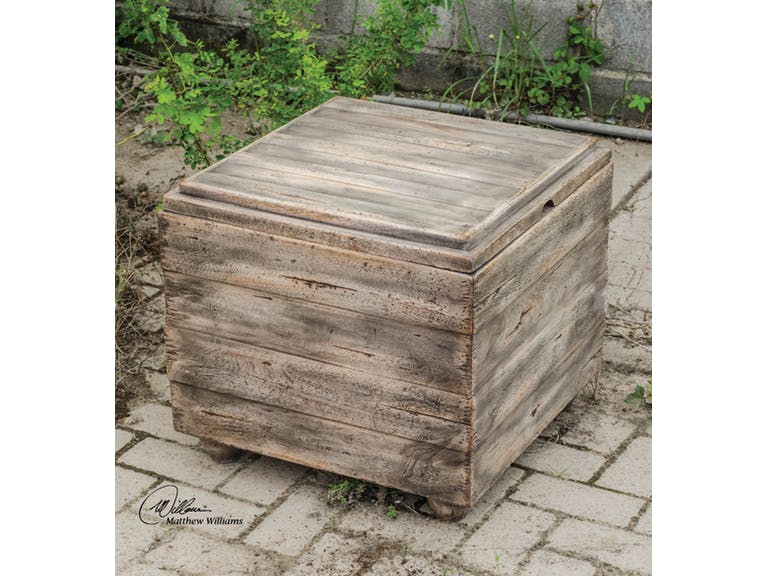
Uttermost Living Room Avner Wooden Cube Table 25603
There is a reason behind the popularity of low-impact homes these days. Apart from energy costs saved, there are health and ecological reasons as well that drive homeowners to choose to live green.
If you’ve just signed up to live an eco-friendly lifestyle, then it would be good to have a few guiding principles to help you on your new journey –
Purchase Responsibly
Green living means you purchase only from businesses that are serious about natural resource conservation. As a homeowner, you should also use energy optimally. Do this as well with your water consumption and other material use.
Buy only the products that have been certified to meet the strictest environmental standards. Always prioritize your environmental and social responsibilities as you make each and every purchase.
Buy Locally
If you have neighbors with local businesses, then support them. But make sure that they also know how to conserve energy and preserve Mother Earth.
You might think that buying locally has nothing to do with the well-being of the planet but think again.
First, food that you buy from the farmers market is fresher. You don’t just get to support the local farmers, you even improve your health and the local economy.
Compared to store-bought food, too, local foods have less transportation time. You can even drive to the nearest farmers market to pick your own peaches, strawberries, blueberries, etc.
Another upside to local purchase is the amount of packaging involved. You can bring your own reusable bags when you buy from the farmers market. As you can see, saying no to plastic is a major decision that you have to make when you want to live a green lifestyle.
Assess a Product’s Environmental Impact
If you want to be truly sustainable, product suitability and longevity must also be balanced with sources and materials that are sustainable. Be involved in the life cycle analyses (cradle-to-grave concept) of the environmental impacts of products that you buy.
Say no to products that harm animals such as alligator or snakeskin products, ivory from elephant tusks, etc.
Reduce, Reuse, Recycle
Just buy products that make use of recycled materials like salvaged timber, reclaimed tiles, recycled pet bottles, etc.
You can help protect the environment by remembering these 3Rs. Reducing means you’re willing to decrease the amount of waste that you and your household produce.
In reusing, you can think of ways that you can use something more than once. For instance, you can shred paper for your pet hamster or you can use glass jars for multiple uses.
Recycling, on the other hand, means you imagine ways to use the product again without having to buy new products. You can compost food wastes and recycle those UPS boxes after you empty them.
Be Energy-Efficient
There are simple ways to begin your energy-efficient lifestyle.
First, you can begin lowering your thermostat especially when you’re away from home. You can also seal your windows and limit your use of space heater.
Be sure to unplug appliances that are not in use and to replace the incandescent bulbs with LED lighting. You can also ask an electrician about the installation of a lighting control system. This should reduce your electrical consumption by 40%.
The 3Rs in Interior Design
And now that you know what the 3Rs are in green living, you can also apply these to your interior design.
If you have to remodel or renovate a part of your home, see if you can find materials that come from recycled sources. There is now recycled construction debris that you can use for your own construction projects.
Ask your interior designer about how to get your hands on such materials.
Tags: green living, McCreerys, McCreerys Home Furnishings, sustainability, sustainable design, sustainable home, sustainable home design
Posted in 2019 Trends, Green Living, Interior Design 101, Interior Design Elements, Interior Design Themes | Comments Off on Sustainability in Interior Design and Everything Else
Wednesday, September 13th, 2017
We all live in an era where energy efficiency is the hottest trend. But have you ever stopped to think what an energy efficient home is?
According to the U.S. Department of Energy, an energy-efficient home design is one that has a high score on energy efficiency. This Score reflects the energy efficiency of a home based on the home’s structure and heating, cooling, and hot water systems (Source: https://www.energy.gov/energysaver/energy-efficient-home-design)
The Natural Climate
It is important, nay, crucial to know the natural climate in your region. Consider the conditions of the winds, the skies, and the sun. Get your hands on a sun path diagram so you can find out which rooms the natural lighting will seep through. Take note also of obstructions such as telephone poles, trees, and nearby buildings.
Apart from the sun path diagram, you can also obtain a wind rose which will show the rate of prevailing winds. The U.S. Department of Commerce has its own wind data collection. These are based on various airport locations so it might be easy for you to find one that is near your would-be home.
Knowing the predominant sky conditions will also help you set up your energy-efficient home. Throughout the year, does your area have clear, overcast or partly cloudy skies? Take advantage of natural light as much as you can. This will greatly reduce your electrical bill since you won’t be depending a lot on artificial lighting.
Just to give you an idea, overcast skies are three times brighter at the peak of the sky’s dome than the horizon. Predominantly overcast areas include the Pacific Northwest where you can maximize free natural lighting. With this in mind, you can now be aware of your window placement so that you also won’t have unwanted glare.
The building orientation which includes the shape of your home will also greatly influence cooling or heating requirements. The best energy-saving orientation is to have your home face the south when you’re from the Northern Hemisphere.
This setup will help you capture solar gain during the wintry months and block solar gain during summer.
Choose Energy-efficient Building Materials
Concrete or concrete foams. This can be sandwiched by two-layered insulation materials. This will then become a permanent part of the house whether through freestanding walls or building blocks.
Rigid foam. This can be used to insulate your home but can now be made from natural sources such as hemp, bamboo, and kelp. Rigid foam is also widely used in the creation of surfboards, turbine blades, and some furniture.
Rigid foam also offers heat and moisture resistance, better acoustics, and protection from pests and mold.
Straw bales. These weigh 50-90 pounds each. You would need 300 medium-sized bales to construct a 2,000 square foot house.
And the great news is? They can last for thousands of years.
Other materials such as recycled steel, foam insulators sandwiched between plywood, plastic composite lumber, and earth can also be used.
Invest in Energy-efficient Appliances
Reduce energy costs by installing Energy Star-rated appliances. You can potentially save up to 70% when you choose these.
An Energy Star is a government-backed symbol. It is there to measure energy efficiency, reduce the emissions of greenhouse gases, and for consumers to save on their energy bills.
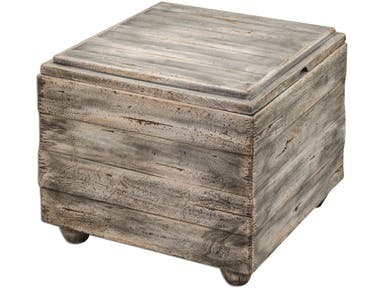
Figure 1.
Green Furniture
Just as you would choose your appliances or your building materials, make sure that your furniture materials are also made from natural, energy-efficient sources. An example is our Uttermost Living Room Avner Wooden Cube Table here at McCreery’s Home Furnishings (Figure 1).
Constructed almost entirely of sustainable, plantation-grown mango wood, this bunching table offers invaluable storage and style in an elegantly casual, waxed driftwood finish.
Tags: Energy Star, energy-efficiency, energy-efficient home, green home, McCreerys, McCreerys Home Furnishings, sustainable design, sustainable living
Posted in Interior Design 101, Interior Design Elements | Comments Off on Erecting the Energy-efficient Home in a Constantly Cold Region
Thursday, November 17th, 2016

Fine Furniture Design Bedroom Bamboo Dresser 1050-144
More and more people are becoming environmentally-conscious these days. The green design for homes has become a standard of sorts and it is no surprise that it is now gaining popularity. Having a green home means owning a place that is environment friendly and has ergonomic designs. This is a design that appeals to those who want to conserve what’s left of the planet. This is also the chosen ambience for people who want to live a healthy lifestyle.
Sustainability Is Piping Hot
Just like other fields of design, interior design will forever be tied to the ever-changing styles. What’s in or out with regard to interior design is almost always what’s in or out in the world of fashion. Should you design goal be about renovation, redecoration or architectural detailing, every interior designer must know what the hottest or classic trends are.
Know that in the design industry, these days, the fastest-growing section is interior design sustainability. You can now practice rain water collection if you want to your home’s water needs or you can buy furniture made with sustainable materials like bamboo.
Highlight Green
The ASID or American Society of Interior Designers strongly believes that green design must be included in every interior designer’s approach these days. The reduction of environmental impact does not just lengthen Mother Earth’s day but could also make your home a healthier place to live in.
Use Energy-Wise Stuff
One basic way to go green on your interior design is to efficiently use every bit of space that is available in your home. Use harmful construction materials to a bare minimum. Live in micro-houses or apodments. These are solutions that are less than 300 square feet and already come with amenities such as a refrigerator and a microwave.
Every interior designer must also work in maximizing doors and windows so that more light could come in. With ample natural lighting comes energy savings. Use wood flooring, furniture and other home products that come from renewable sources. Have water-saving toilets set up.
If you want to be surer about the source of your materials, then talk to the suppliers.
Say Yes to Waste Reduction
Decorative stuff and furniture can be easily repurposed these days. If you are truly environmentally-conscious, you can refurbish or a better option is to decide on a style that you would want for the rest of your life then invest in furniture pieces that would last as heirloom pieces.
Use fabrics, tiles and carpets that were made from recycled materials.
Plan Lighting Efficiency
Another part of your plan is to be clever about the incorporation of light in your home. Use skylights and windows more effectively. Maximize daylight by using these parts of your home and minimizing artificial lighting.
Apply a Fresh Coat of Paint
You may or may not believe this but the color that you use to paint the interior or exterior parts of your home can spell a huge difference in light and heat absorption. The hottest summer months require cooler and lighter colors such as greens and blues. These hues can reduce room temperature by as much as 6-10 degrees.
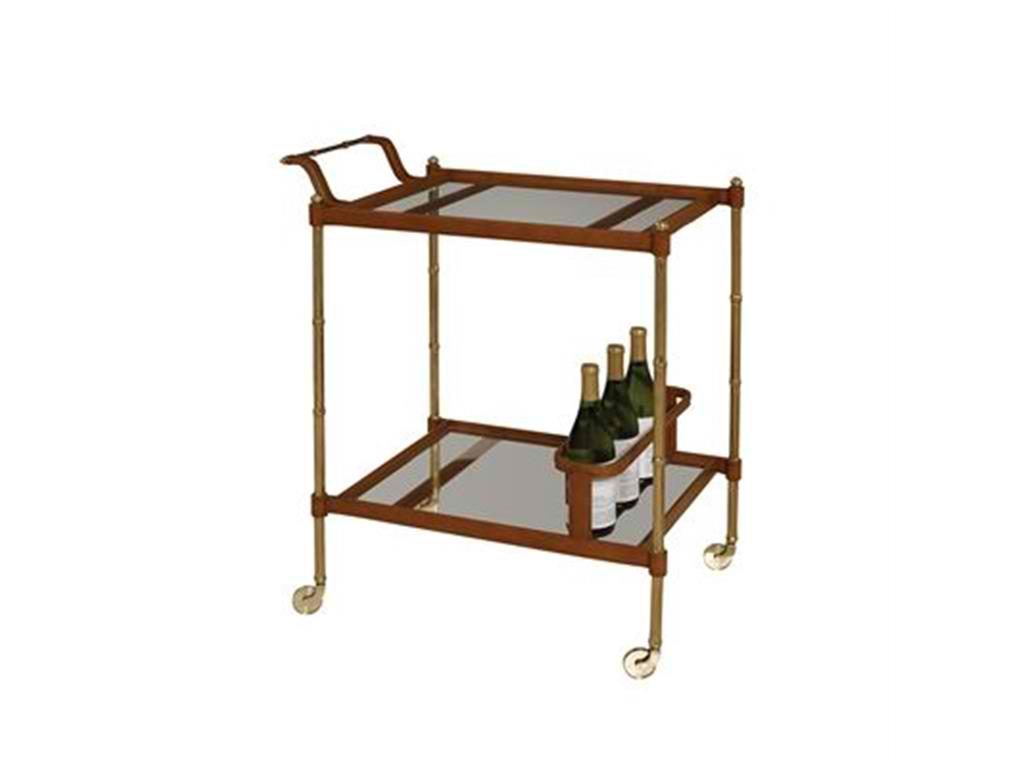
Maitland-Smith Accessories Bamboo Cast Brass Bar Cart 3020-042
Use New Window Treatments
Do not forget to consider the drapes, curtains and blinds. These can also help in the reduction of energy costs. You might think that window treatments are mere decorative items but they are, in fact, choices that can make a huge difference.
Drapes, for instance, are effective in keeping out drafts in winter seasons while shutters and blinds keep the warmth outdoors.
Landscape Your Way to Green Living
Lastly, you can plant trees right where the sun rises. This will reduce the amount of heat that goes through your windows during the day. Eventually, you will observe how your energy costs are greatly reduced.
You see, green living is tantamount to living a life of substantial savings.
Tags: energy efficient living, energy-efficiency, energy-efficient home, green, green design, green home, green interior design, McCreerys, McCreerys Home Furnishings, sustainability, sustainable design, sustainable home, sustainable home design, sustainable interior design, sustainable lifestyle, tips
Posted in 2016 Trends, 2017 Trends, Green Living, Interior Design 101 | No Comments »
Tuesday, August 23rd, 2016
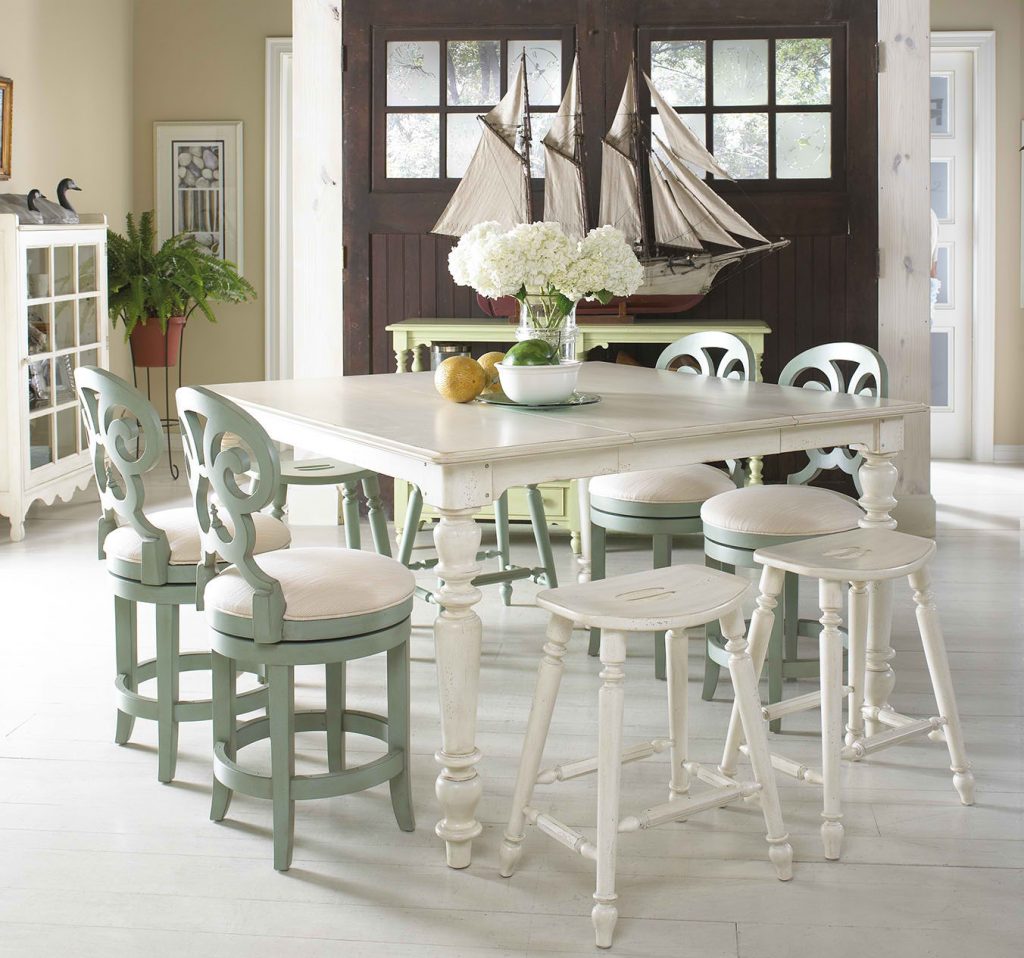
FFDM Summer Home Collection: Allowing natural light to stream in during the day can save you a lot of money on energy.
Do you believe that your house is a system? You can easily save money and even improve the performance of your home if you are willing to take cost-effective measures. These steps can significantly reduce building load, eventual appliance and furniture repairs, etc.
Target the Exteriors First
The most effective way of improving your home’s energy efficiency is to look at your walls, doors and windows. Make sure that the walls are well insulated. Only when these are already considered green should you begin looking at other systems such as lighting, heating, cooling and appliances.
Set Up Effective Insulation
Minus effective insulation, a home will have heat flowing profusely out of the walls. This is especially catastrophic during winter. See to it that you use the least amount of energy, though, in heating or cooling the house.
Houses without wall insulation or has wall cavities should have blown-in insulation. This will up the level of comfort and cost-efficiency so if you still have uninsulated walls, it’s best to look into having a professional installer do the job. For homes with damaged or old insulation, on the other hand, should undergo insulation upgrade.
Meet the Energy Auditor
You can begin your path towards green living by talking to an energy auditor. This green home professional has expertise in choosing the right insulation materials such as fiberglass, foam or cellulose. Such materials can help keep heat or coolness inside the walls of a home. The keywords that you need to remember are these – properly installed. This means the insulation was installed by a contractor using the right assessment and installation tools. The contractor, for example, uses infrared camera to check for void in walls.
Improve or Replace Windows
If the windows in your home are already old and leaky, then this may be the time to have them replaced with energy-efficient types. If you’re not willing to say goodbye to your windows just yet, then you could look into weather-stripping or having storm windows.
Window replacement may not be a cheap project but it definitely saves you money in the long run. This could also improve the level of comfort in your home.
Plant Trees and Shrubs
If you are living in an older house with obvious poor insulation and damaged windows, then know that having good landscaping can save a lot of energy while you’re still planning the huge architectural project. Deciduous trees that are planted on the west side of the house could help block infrared radiation. See also that the insulation is upgraded and your home meets Energy Star requirements.
Check the Old Furnace
Furnaces that were built before 1992 have a standing pilot that wastes about 35% of fuel. It is also possible that such furnaces are almost at the end of their service lives.
Invest in a condensing furnace as this offers an annual efficiency of no less than 90%. This kind wastes less than 10% of the natural gas and could help save 27% on your heating bill.
Furnaces that were installed beyond 1991 are probably annual fuel utilization efficient. If you’re in doubt, you can always ask the help of an energy auditor or a heating service technician.
Check the Hot Water System
To improve the hot water system’s efficiency, begin by turning down the temperature to about 120 degrees Fahrenheit. Be sure to insulate the hot water lines so that they won’t cool off too quickly. Lastly, use only low-flow fixtures for baths and showers.
Green living may be a lot more difficult to maintain but it has its perks. You save money and you become an ally of Mother Nature.
Tags: eco-friendly interior design, eco-friendly interiors, eco-friendly tips, energy efficient living, energy-efficiency, energy-efficient home, green home, green interior design, green living, McCreerys, McCreerys Home Furnishings, sustainable design, sustainable home, sustainable home design, sustainable interior design, sustainable lifestyle, sustainable materials, tips
Posted in Interior Design 101, Interior Design Themes | No Comments »
Wednesday, May 18th, 2016
Over the last years, a species of grass has been used considerably to create affordable furniture. This is no less than the favored material among clothing manufacturers, landscape artists, athletic shoemakers, and interior designers. There are various reasons why bamboo is chosen to create different kinds of stuff. The green spirit that is now enveloping the globe is one huge reason.
Bamboo Means Sustainability
Manufacturers from all over the world are now responding to the call for environmental consumerism. Sustainable products are in and plastics are becoming less and less popular.
Bamboo clothing is made with breathable fabrics that are also eco-friendly. It doesn’t just look great, it also wears well. Bamboo fabric is exceptionally absorbent. Moisture tends to evaporate more quickly even in warmer temperatures.
Bamboo fabric is also hygienic. Scientists have proven that it comes with a unique anti-bacteria as well as an anti-fungal bio agent known as kun. This natural element is also a non-chemical deodorant that does not irritate the skin.
The bamboo trend does not end in clothing choices. Remember that there are more than a thousand species of bamboo all over the world. In landscaping, this is the perfect alternative to plastic. Bamboo is being used as an eco-friendly fence in a lot of homes. Some landscape architects even go as far as planting bamboo plants in gardens for a lush, fresher feel.
Bamboo and Your Interior Design
Hotels all over the nation are now signing up for different kinds of green programs. This is because business travelers now require eco-friendly accommodation. People also now believe that going green is not just environmentally-friendly but also a money saver of sorts.
Environmentalism is the hottest issue these days and you have to take part in it.
As more and more bamboo products are being sold in the market, it is now time to make your decision whether you would jump to the bandwagon or not. Bamboo can be a great substitute for hardwood floors, ceilings, even walls.
Bamboo furniture and accessories are not only green but can also be superior to other interior design materials. It is naturally resistant to wear and tear for as long as it is sheltered from the harsh elements. With sufficient maintenance, it should be able to resist staining, warping and cupping.
Bamboo comes in a wide spectrum of finishes which is why it is becoming a favorite among interior designers. It is also easy to maintain and clean while offering the versatility and natural beauty of hardwoods.
The West has fallen in love with everything that’s Asian so it’s no surprise that interior design has incorporated a lot of eastern elements these days.
There are real and faux bamboo furniture pieces but it pays to have the real deal. At times, oak, pine or maple is used to resemble the beauty of bamboo while keeping a sturdier piece of furniture. This isn’t a new technique since the Chinese have been manufacturing faux bamboo since the 1300s.
There are so many ways to fuse bamboo into your interior design. You could paint a bamboo headboard with black especially when you are pairing it with a Japanese style chest of drawers. Bamboo can easily mix with any kind of design, you will surely notice this soon enough. A duvet in paisley plus a modern lamp will also mix well with bamboo.
Bamboo is also very much at home when used as a bed material. It can work well with many English antiques. It is a beautiful way to have an Eastern pull into an otherwise Western setup.
Accessorizing with bamboo is a good way to mirror the eastern look throughout your home. Find bamboo accent chairs, accent tables or knickknacks.
So, would you dare to go green?
Tags: bamboo, bamboo furniture, bamboo interiors, McCreerys, McCreerys Home Furnishings, sustainable design, sustainable materials
Posted in Accents, Interior Design 101, Interior Design Elements, Interior Design Themes | No Comments »
Tuesday, April 5th, 2016
One of the in things to do these days, the hottest bandwagon so to speak, is to live in an energy-efficient home. Founders of companies, couples, women, even college kids are now purchasing building plans for their new green homes. Some of these homes can be as small as 120 square feet (or even less).
There are challenges in living in a small space – this is certain. But there can also be benefits should you know what to do with the tiny space that you have.
Advantages of Small Home Living
The U.S. Census reported in 2010 that the average size of homes is about 2,400 square feet. Despite this large home dominance, many homeowners still recognize the advantages of living in a small place.
One of these advantages is energy efficiency. With a smaller place to cool or heat, this spells lower carbon footprint.
Flexsteel Home Office Bookcase W1201-701: Small space living means looking for effective ways to store stuff in your home.
Another advantage is not having to clean a large space. Fewer rooms means less maintenance or cleaning time. This can be a perk to your family since it would mean more time spent outdoors, doing all the stuff that the family loves.
A smaller home also means you have a cozier and more intimate space. These are the very things that bigger homes lack.
Smaller homes are also less expensive and less pricey to live in. You get smaller utility bills with your smaller place – that is also guaranteed. Small homes can spend as little as $180 in energy as compared to hundreds and thousands that large home dwellers need to pay for.
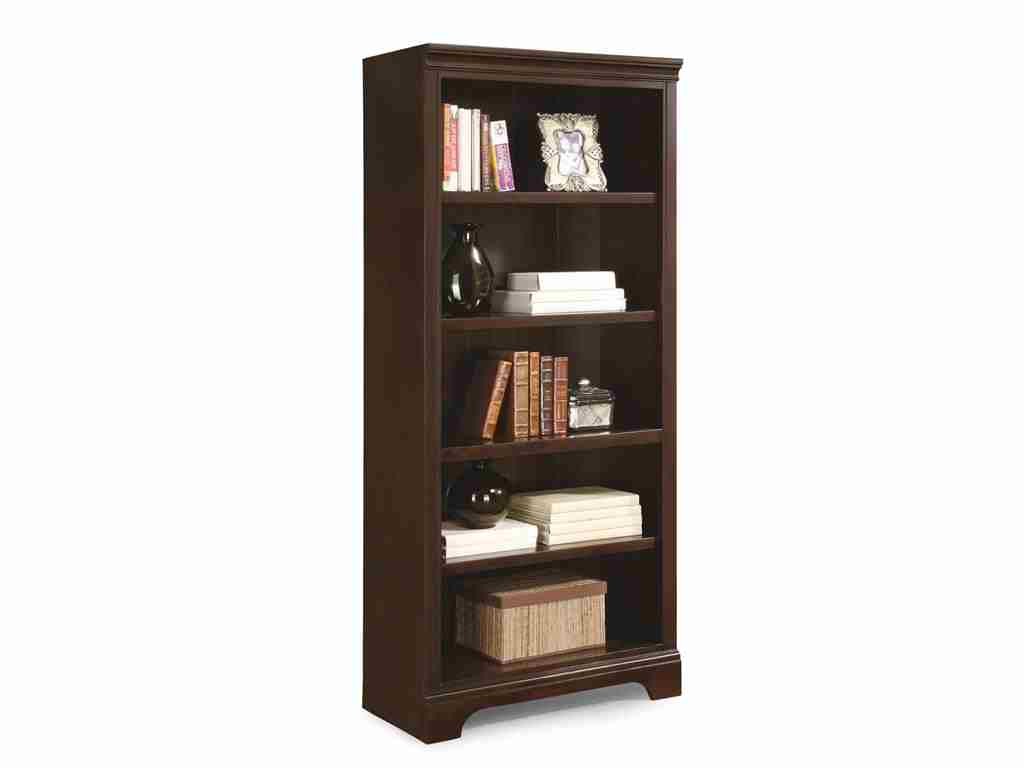
Flexsteel Home Office Bookcase W1201-701: Small space living means looking for effective ways to store stuff in your home.
Freedom in a Small Space
So how can you achieve freedom in a much smaller space?
Begin developing your cute green home at the main room. This can be a living room and an office space in one. You can install a tiny fireplace, two comfortable chairs, a desk, and some hidden storage.
You can then go to the sleeping space which can be just a tiny nook right upstairs. Your cute home must have good insulation to keep you and your family warm during the wintry months and cool during the summer season.
The front door can open to two rooms at the same time. This can be the dining area and your kitchen space. Install a sink, portable electric range, small refrigerator, and a prep surface for your kitchen/dining area. The dishes and other kitchen tools can be stored in smaller cabinets or shelves.
Accept also the fact that you will have a smaller bathroom. Install a small yet full bath containing the toilet, sink, shower and tub within 10 square feet. Water can be gathered from neighboring spigot. You could cook up something more elaborate but you will have to deal with local building codes if you do so.
Smaller homes are not just energy efficient, they are also sturdier. This means that you won’t have to worry as much when a quake suddenly ensues. This is because shorter distances spell a more expedient escape. Remember that the smaller the surface area, the smaller chances that the house would topple because of an earthquake.
Smaller homes have also been proven to be safer from fires.
The secret to achieving freedom in the midst of coziness is to use every inch efficiently. You may feel uneasy during the first few months. You could even spend time figuring out what works and what doesn’t.
Everything is also depending upon your perspective, the beauty of your home being the topmost priority. Whatever makes sense for you and your family’s needs is what should be built, invested upon or installed.
This tiny yet liveable green home is yours to own – be sure you’re ready to embrace simple living.
Tags: designing a small apartment, designing a small space, energy-efficiency, energy-efficient home, green home, green living, McCreerys, McCreerys Home Furnishings, sustainable design, sustainable home, sustainable home design, sustainable interior design, sustainable lifestyle, sustainable materials
Posted in Green Living, Interior Design 101, Interior Design Themes, Tiny Homes | No Comments »
Thursday, February 18th, 2016
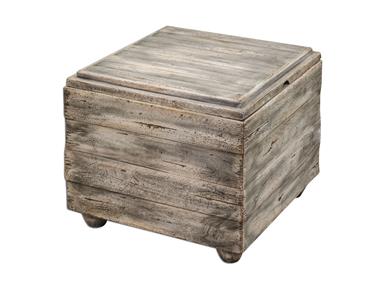
Living Room Uttermost Avner Wooden Cube Table 25603 offers a unique and stylish look to your home as you transition to green living.
Also known as eco living, green living is tantamount to saying that you are living in a sustainable home. This is, after all, the standard that the world looks up to. It is because of this that manufacturers find ways to tell the world about their green credentials. Even appliances now come with energy-saving functions. Some materials that are used in food and other packaging are now recyclable or are actually recycled materials. This new generation of sustainable furniture as well as lighting designs aim to satiate people who have become aware of their roles in keeping Mother Earth intact.
Green Living in Your Home
Healthy interiors can make the tenants feel more comfortable and satisfied. In workplaces, it can even foster employee retention.
Occupant interaction with the surroundings can also impact individual emotional and mental wellness. For offices, it can even improve building operations. Since this is so, it should now be your goal to create sustainable interiors right in your own home.
You should now pledge to make productive use of your space and to use only eco-friendly lights and furniture. Also, the ambiance in your home should have green written all over it.
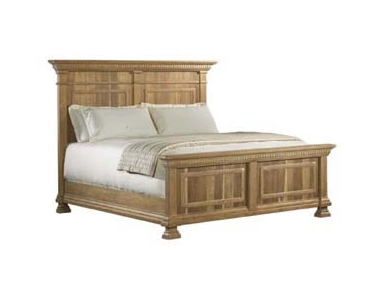
The Artistica Bedroom Axiom King Bed 560-566 is sustainable. It is built with plantation-grown parawood solids as well as acacia veneers.
Green Living: Lighting
There are many benefits that come with eco living and when you decide to apply it even in interior design. You can now effectively combine energy saving technology with utility. Many appliances now have energy storage with some even installed with photovoltaic cells.
With eco-friendly lighting come not just energy savings but also the perfect look for ambient spaces. Energy saving bulbs use up less energy when compared to traditional light bulbs. What a wonderful sight it is to behold a dynamically created lighting fixture in your home! It spells poetry in the form of light while serving as a reliable light source for your lovely ambience.
Green Living Is In
Just like other design industries, the world of interior design is forever tied to volatile styles. In essence, it is like assessing clothes whether they are hot or they’re not.
Whether the client’s goal is to renovate, decorate or to create architectural detailing, interior designers must always be up on their toes with regard to what’s hot in their field. The trend at the moment – and probably the fastest growing segment of the interior design industry nowadays – is sustainability.
Bamboo and other sustainable materials are hot. And with the ASID (American Society of Interior Designers attesting that sustainability should be one of the areas of focus for interior designers today, everyone is simply geared towards the use of sustainable materials and wasting not. Even the curricula in different design schools already include sustainability as one of their crucial courses.
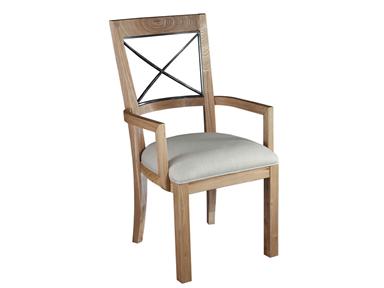
The Artistica Dining Room Idiom Arm Chair 451-010 is manufactured using plantation grown elm. It is beautifully combined with industrial steel to give you that architectural and textural wonder.
Green Living for the Homeowner
Whether you wish to become an interior designer someday or are just taking on an interior design project on your own, then you have to remember these guidelines –
Green living doesn’t have to be time consuming. It is a matter of making that conscious decision to change your lifestyle and the way you run things in your home. Yet this does not mean that your living space should look boring, though. You can still beautify your home by using your artistic eye in choosing sustainable furnishings.
Tags: eco living, eco-friendly home, eco-friendly interior design, eco-friendly interiors, eco-friendly tips, energy efficient living, energy-efficiency, energy-efficient home, green interiors, green living, McCreerys, McCreerys Home Furnishings, sustainability, sustainable design, sustainable living
Posted in Interior Design 101, Interior Design Elements, Interior Design Themes, Interior Design Trends | No Comments »
© McCreery's Home Furnishings | All Rights Reserved | Privacy Policy